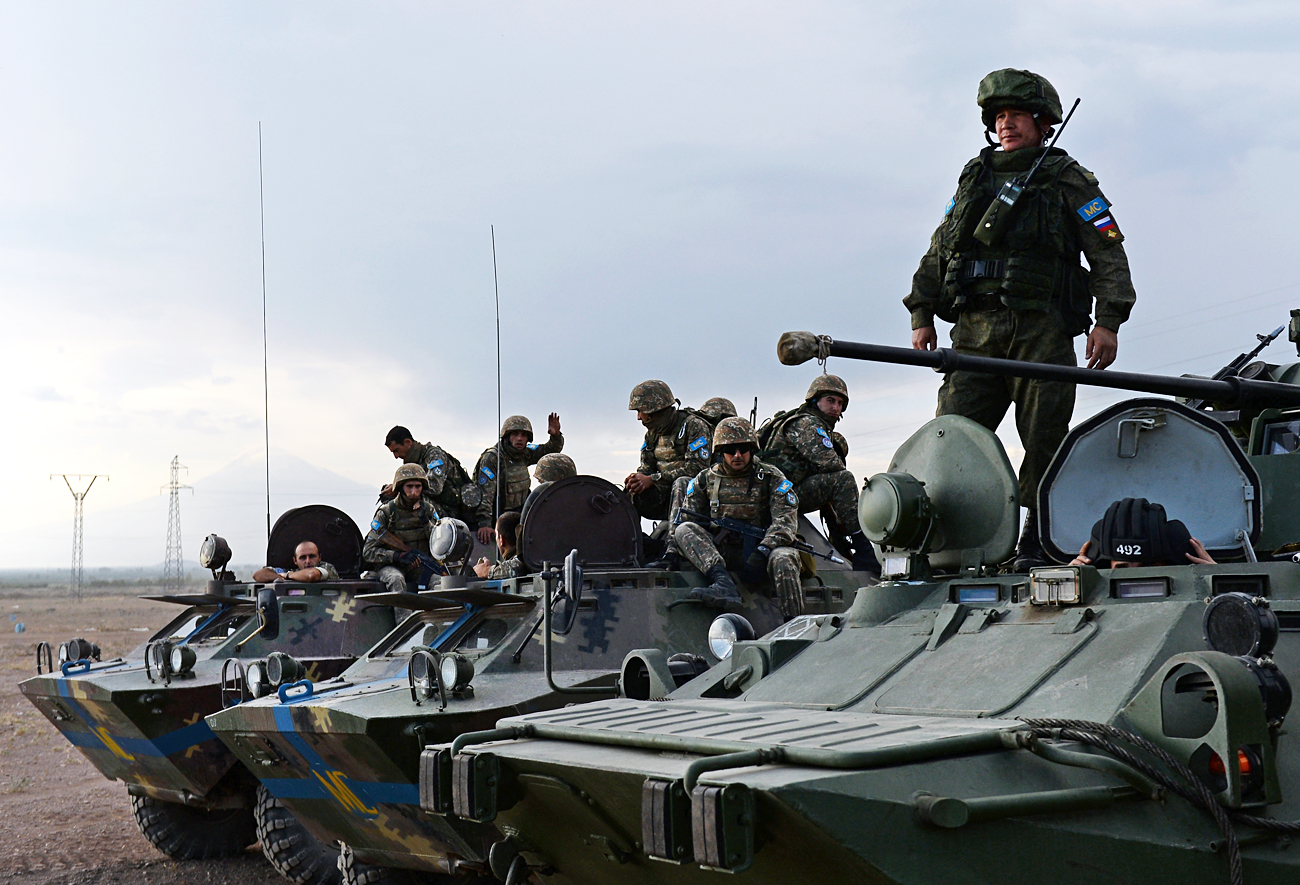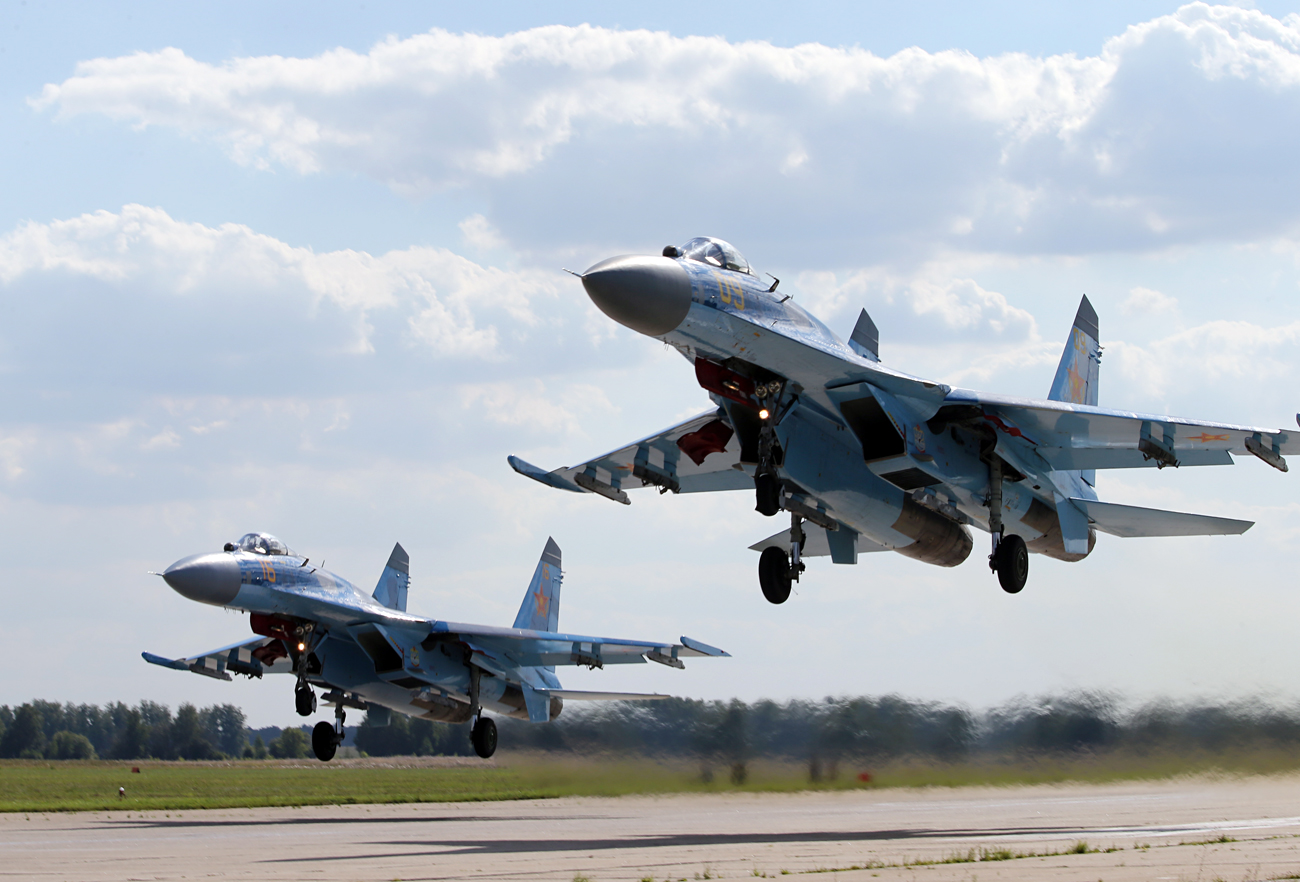Russia and Armenia to create joint defense force in Caucasus

Peace keepers of the Russian Defense Ministry seen here during the joint military exercise 'Unbreakable Brotherhood 2015' held by the Collective Security Treaty Organization's peace keeping forces at the Bagramyan base, Armenia.
Maksim Blinov/RIA NovostiRussian President Vladimir Putin has approved a proposal (in Russian) by the Russian government to establish a joint group of Russian and Armenian forces in the Caucasus region to deal with potential attacks on either country.
Following Putin’s approval on Nov. 14, the Russian Defense Ministry, together with the Russian Foreign Ministry, are to hold a series of talks with their Armenian colleagues and, when the work is finished, sign an agreement on behalf of the Russian Federation.
During the work, the military and diplomats are also allowed to make the necessary adjustments to the project with the consent of the two governments.
The group's tasks
The alliance is being established to ensure the security of Russia and Armenia in the Caucasus.
Under the agreement, servicemen of the Russian Federation and Armenia commit themselves to repelling any armed attack against each of the parties, as well as suppressing any attempts at illegal entry across the borders of the two countries.
In peacetime, the group of forces in the Caucasus region will be commanded by the General Staff of Armenia. However, in any period of hostilities, all the leadership in this area will be transferred to the Command of Russia's Southern Military District, stationed in Rostov-on-Don (670 miles south of Moscow).
"From now on, the General Staff of Armenia has the ultimate authority to plan joint activities in the region: exercises, command and staff trainings, and so on," Pavel Zolotarev, military analyst and deputy director of the Institute for U.S. and Canadian Studies at the Russian Academy of Sciences, told RBTH.
At the same time, according to the expert, this agreement allows both Moscow and Yerevan to pursue their independent policies, where there is no pressure "from above" on one of the countries.
"The most important thing is that a 'common defense space' between the two countries will be created now," said Dmitry Safonov, military columnist for the Russian daily newspaper Izvestiya, in an interview with RBTH.
"In addition to the development of joint plans for training and combat use of troops, Armenia will be able to buy Russian weapons at domestic prices, rather than as a foreign customer,” said Safonov.
As he stressed, in case of an attack on Armenia, the entire army of the Southern Military District (the forces of the Black Sea Fleet and the Caspian Flotilla, ground forces, the air force, etc.) will join in the defense of its territory.
The agreement is for the term of five years with an automatic extension option if neither of the parties wishes to terminate the cooperation. A similar agreement is already in force between Russia and Belarus.
NATO-style military alliance?
According to Zolotarev, the draft project for the joint group of forces says nothing about the establishment of a military alliance modelled on NATO.
"Such an alliance implies a joint military budget, military policy, etc. The joint group of forces, in turn, comes down to an improvement in the cohesion of the two armies during fighting," he told RBTH.
Nagorno-Karabakh problem
The question is what implications the new agreement would have for a potential attack by Azerbaijan on the disputed territory of Nagorno-Karabakh, a breakaway region that is effectively a protectorate of Armenia but which is internationally recognized as Azerbaijani territory. Conflict sporadically erupts along the border the “republic” shares with Azerbaijan, most recently in January-February 2016.
This state is formally recognized neither by Moscow or Yerevan. At the same time, according to Safonov, the constitution of Armenia states that it is responsible for the security of Nagorno-Karabakh.
"Russia abstracts itself from this conflict," said Zolotarev. "Under the new agreement, our troops cannot be used in the fighting in this area. Nagorno-Karabakh will be defended only by the Armenian armed forces."
Russian troops in Armenia
The town of Gyumri, 80 miles north of the Armenian capital, hosts a Russian army base where around 5,000 troops are stationed.
The base consists of three mechanized infantry, one artillery and one anti-aircraft missile regiment. Units of fourth-generation MiG-29 fighter jets are also deployed in the region.
The Russian base has about 100 T-72 tanks, around 150 BMP-2 and BTR-70/80 armored vehicles, BM-21 Grad and BM-30 Smerch multiple rocket launchers, a battalion of S-300V and Buk-M1 air-defense systems, as well as Mi-24 and Mi-8 helicopters.
Read more: Why does Russia need bases in Cuba and Vietnam again?>>>
Subscribe to get the hand picked best stories every week
All rights reserved by Rossiyskaya Gazeta.
Subscribe
to our newsletter!
Get the week's best stories straight to your inbox

